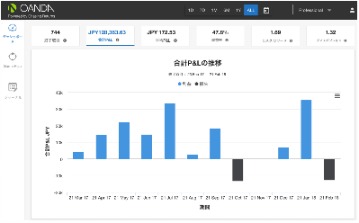Contents

It may be tempting to try to wait for the “best time” to invest—especially in a volatile market environment. Even the worst possible market timers in our studies would have beat not investing in the stock market at all. While Rule #1 Investing is a long-term investment strategy, there will come a time to sell and hopefully profit from your smart investment decisions.

Take the time to explain how buying stocks are similar to making purchases at the supermarket, yet different because the prices change more rapidly. A seller and a buyer both submit an asking price and selling price through a broker or an online platform. If an asking price and selling price match, the orders are filled. In large markets this can happen instantaneously, but in small markets it can take quite a while or not happen at all.
- The line ‘D’ is the demand, and ‘S’ supplies, with a horizontal axis being the quantity and the vertical axis being the price.
- Investment services and the Brokerage Accounts for treasury securities are offered by Jiko Securities, Inc. (“JSI”).
- Investors benefit by exchanging their money for shares on the stock market.
- If buyers outnumber sellers, they may be willing to raise their bids to acquire the stock.
The racial composition of https://forex-trend.net/ market ownership shows households headed by whites are nearly four and six times as likely to directly own stocks than households headed by blacks and Hispanics respectively. As of 2011 the national rate of direct participation was 19.6%, for white households the participation rate was 24.5%, for black households it was 6.4% and for Hispanic households it was 4.3%. Households headed by married couples participated at rates above the national averages with 25.6% participating directly and 53.4% participating indirectly through a retirement account.
According to the negotiation phase of financial assets
Intellectual capital contributes to a stock’s return growth. Rates of participation and the value of holdings differ significantly across strata of income. In the bottom quintile of income, 5.5% of households directly own stock and 10.7% hold stocks indirectly in the form of retirement accounts. The top decile of income has a direct participation rate of 47.5% and an indirect participation rate in the form of retirement accounts of 89.6%. The median value of directly owned stock in the bottom quintile of income is $4,000 and is $78,600 in the top decile of income as of 2007.

https://topforexnews.org/brokers, who may or may not also be acting as financial advisors, buy and sell stocks for their clients, who may be either institutional investors or individual retail investors. Shares offered in IPOs are most commonly purchased by large institutional investors such as pension funds or mutual fund companies. To facilitate this process, a company needs a marketplace where these shares can be sold and this is achieved by the stock market.
Crashes
Both the many types of IRA and 401s allow you to make decisions on where to invest your money or hire someone to manage them for you. The stock exchange is like a marketplace where you can buy and sell the trees you own. To do this, people post asking and selling prices on a bulletin board.
https://en.forexbrokerslist.site/ is the exchange that deals with the stocks of the technology giants. The emergence of this market can be traced back to the 1600s when the Dutch East India Company sent multiple ships on voyages to trade gold, porcelain, spices, silk, etc., around the world. Thus, the traders approached citizens to fund the transportation in exchange for a portion of the profits.

Stock Exchange — An exchange is the middleman that connects buyers and sellers who want to trade stocks, bonds and other securities. Preferred stocks — These types of stock give preferred stockholders different treatment when paying dividends . They are paid before common stockholders and generally earn higher dividends that are fixed. The returns are often lower, even over the long term, and are less volatile in day-to-day dips and spikes. Maybe you’re looking to invest for retirement, or maybe you have extra cash that you’re looking to put to use. Understanding how stocks and the stock market work can help you make smart investments and avoid common pitfalls.
Brokerage services for alternative assets available on Public are offered by Dalmore Group, LLC (“Dalmore”), member of FINRA & SIPC. “Alternative assets,” as the term is used at Public, are equity securities that have been issued pursuant to Regulation A of the Securities Act of (“Regulation A”). These investments are speculative, involve substantial risks , and are not FDIC or SIPC insured.
How to Research Stocks
He has covered investing and financial news since earning his economics degree from the University of Maryland in 2016. Sam has previously written for Investopedia, Benzinga, Seeking Alpha, Wealth Daily and Investment U, and has worked as an editor for Investment U, Wealth Daily and Haven Investment Letter. We believe everyone should be able to make financial decisions with confidence. Chase’s website and/or mobile terms, privacy and security policies don’t apply to the site or app you’re about to visit. Please review its terms, privacy and security policies to see how they apply to you. Chase isn’t responsible for (and doesn’t provide) any products, services or content at this third-party site or app, except for products and services that explicitly carry the Chase name.
Stocks are traded on an exchange, and the value of these stocks can fluctuate over time. Investors assess tree’s growth, production of fruit, and make an offer. When many people all want the same tree, the seller can price their tree higher, since their tree is more scarce. When no one wants a particular tree, the seller is forced to lower their prices in order to sell.

If the stock price has met its intrinsic value, or the story has changed, it may be time to sell. Now, the prices of publicly traded companies are influenced by more than just supply and demand. Publicly traded companies can then use this money to work on projects such as new products, expanding operations, hiring, etc. Going public also affords companies the ability to attract top talent with stock options and provide current employees with equity.
But a sole proprietorship may not have enough money to grow or the owner may be concerned that he or she carries all the risks of operating a business. A sole proprietor may join with other people to form a partnership, owned by two or more people. There may be more money to invest now, but the owners have to share decision making power and cash may still be limited. A partnership can also limit risk by making the business itself a legal entity. This way the business may be sued but the partners homes and money outside the business will be safe. A stock’s market capitalization, or market cap, is the total value of all the outstanding shares of the stock.
This process of obtaining price protection is called hedging. Stocks, bonds, and futures contracts can also be sold in groups as mutual funds. Mutual funds employ professional managers to make decisions about what to buy and sell. A business owned and operated by one person is called a sole proprietorship. A sole proprietorship is easy to form and all the profits go to the owner.
Bitcoin,Ethereum and other cryptocurrencies are traded on specialized crypto exchanges. Raw materials like steel, coal and oil are traded on commodities markets. There are around 50 major commodity markets worldwide that facilitate trade in a wide range of commodities. The transaction occurs when the highest bid and the lowest ask prices meet. The market works like an anonymous auctioning machine – one person auctions assets and waits for another person to bid the right amount.
In addition to the rise of the NASDAQ, the NYSE faced increasing competition from stock exchanges in Australia and Hong Kong, the financial center of Asia. Using the stock exchanges, investors can also buy and sell securities they already own in what is called the secondary market. Stock markets provide a secure and regulated environment where market participants can transact in shares and other eligible financial instruments with confidence, with zero to low operational risk.




